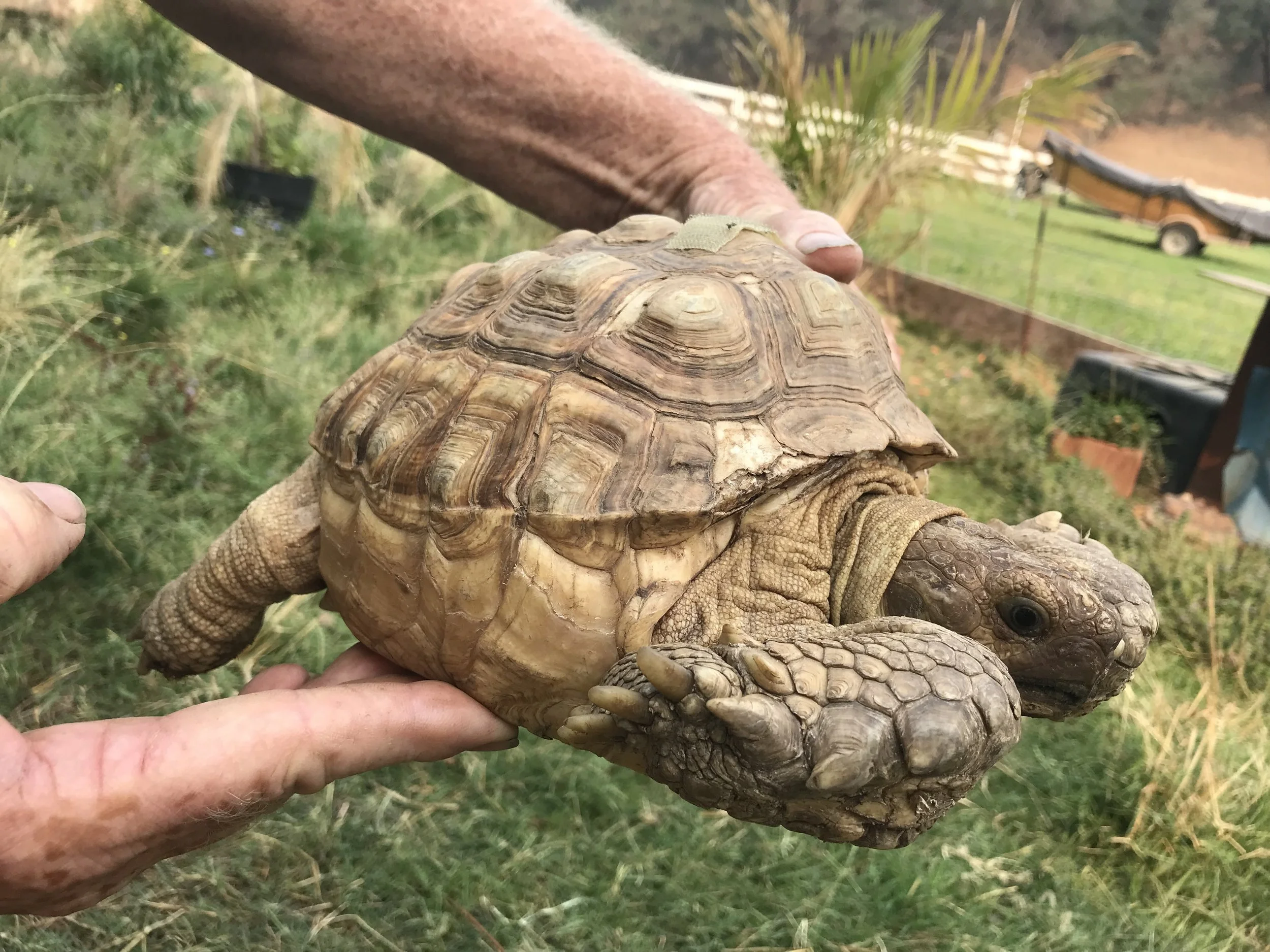Why We Don't Sell Large Tortoises at Our Reptile Store
Rarely does a weekly go by that a customer doesn't ask why we don't sell sulcatas and other large tortoises. As the only true reptile store in Northern California (north of Chico), it's a fair question and worthy of a detailed explanation.
The sulcata tortoise (Geochelone [Centrochelys] Sulcata) is commonly sought after by beginner and experienced reptile loves alike due to their hardiness [as adults], curious personality and low cost to purchase. Sulcatas have proven to live up to 70 years in captivity and often reach 150+ pounds as adults. They need a significant amount of room to roam and are hefty eaters.
Individuals and families who seek out these dinosaur-like creatures often have great intentions. They begin with the desire to raise a tortoise from a baby, with plans to have a house and land some day that's perfect for raising a large tortoise. Unfortunately, most of the time plans change and these tortoises left abandoned. Most frequently they are sold on Craigslist, let loose, or surrendered to your local tortoise rescue.
We believe that we have a responsibility to the local Redding reptile community to support and encourage responsible animal care, particularly in cases where there is an overabundance of surrenders. When people come into our store inquiring about adding a large tortoise to their family, we direct them to our friends at Tortoise Acres Sanctuary in Anderson, CA who rescue and care for abandoned tortoises. Of course, we are happy to help customers with the care, housing and food that the tortoises will require to thrive.
This post was inspired by a recent trip we made to visit Tortoise Acres. They were a tremendous help to us this year during the Carr Fire evacuations, taking in two of our rescued sulcata tortoises (Dozer and Bowser) plus another 12 tortoise and box turtles that we have rescued over the past five years. While visiting to pick up our critters, the owner kindly gave us a tour of the property and non-profit 501(c)(3) rescue operation.
[Trigger Alert] The rest of this story and subsequent photos may be difficult to read / see.
She introduced us to a tortoise that had recently been surrendered and was up for adoption. He had suffered a dog bite that had broken his shell, causing him to not be able to retract into his shell [which they do for protection]. The bite also caused several shell growth deformities. But the most heartbreaking detail, was that a hole had drilled into his shell so that the previous owners could tie him up to prevent him from escaping.
As much as it pains us to see this type of neglect and cruelty, we believe that it was most likely done out of ignorance rather than malice. Despite the popular belief that tortoises cannot feel their shells, tortoise shells are actually filled with nerve endings and are quite sensitive. The poor guy must have endured a tremendous amount of pain!
"Tortoises are extremely sensitive creatures. Despite popular belief, they can feel the slightest touch to their skin and shells. It was once thought that a tortoise’s carapace was void of any nerve endings, and as such horrific acts were often carried out and even recommended by media and literature of that time. This included drilling holes through the shells and tethering the animals." - The Tortoise Shop
If you're interested in learning more about tortoises, or have questions about how to care for them, give us a call! We'd love to help get you set up with the best choice for you.







